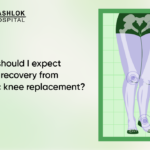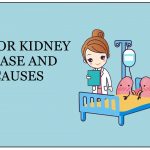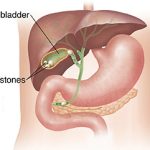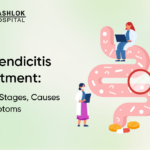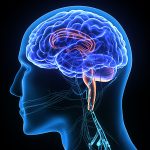What Is a Hernia? Causes, Symptoms, and Treatment Options
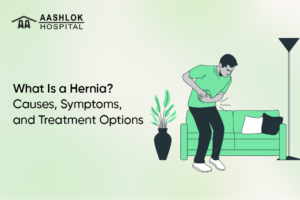
Understanding what is a hernia, its causes, symptoms, and treatment options is the first step toward recovery. A hernia occurs when an organ or tissue bulges through a weak spot in the muscles or connective tissues. Hernias can happen in various parts of the body, causing symptoms like mild discomfort and significant pain. Understanding what is hernia surgery can help you prepare for the procedure, which may be necessary to treat the hernia. At Aashlok Hospital, we use advanced technology to provide the most effective solutions for hernia diagnosis and treatment.
What Causes Hernia?
Hernias are primarily caused by a combination of muscle weakness and excessive strain. Understanding the causes helps in prevention and timely diagnosis. Here are some common reasons:
- Heavy lifting or physical exertion: Repeated strain on abdominal muscles from lifting heavy objects can lead to hernia formation.
- Chronic coughing or sneezing: Pressure on the abdominal area due to conditions like chronic obstructive pulmonary disease (COPD) or allergies can weaken the muscle wall over time.
- Obesity: An excessive weight increases pressure on the abdomen and weakens the abdominal muscles.
- Congenital muscle weakness: Some individuals are born with naturally weak abdominal muscles, making them more prone to hernias.
- Previous surgeries: Surgical incisions can leave weakened areas in the muscle wall, which may develop into incisional hernias.
By understanding what causes hernia and addressing these factors, you can take preventive care. At Aashlok Hospital, we focus on effective treatment strategies for patients experiencing hernia-related issues.
Types of Hernias
Each type of hernia comes with unique characteristics and symptoms. Now that you know what is a hernia; let’s explore various forms.
Inguinal Hernia
Inguinal hernia is the most common groin hernia. This type of hernia occurs when a part of the intestine bulges through a weak spot in the lower abdominal wall, specifically in the groin area. It’s the most common type, particularly in men, due to the natural anatomy of the inguinal canal.
Umbilical Hernia
An umbilical hernia is common in infants but can also affect adults. It develops when the intestine or fatty tissue pushes through the abdominal wall near the belly button. In adults, it’s often caused by obesity, pregnancy, or heavy lifting. You might notice a soft bulge in the navel area, which may increase with physical activity or coughing.
Hiatal Hernia
Hiatal hernias are a type of upper abdominal hernia, but they don’t occur in the abdominal wall. They occur in the diaphragm when the stomach pushes through the diaphragm into the chest cavity. This type of hernia can significantly affect digestion and is often associated with gastroesophageal reflux disease (GERD). Hiatal hernias can worsen if you lie down after eating or bend over.
Incisional Hernia
An incisional hernia develops at the site of a previous surgical incision. Weakness in the surgical scar can allow tissues to push through, especially if proper healing doesn’t occur. Obesity, infection, or improper wound care increase the risk. Incisional hernias can be prevented by carefully following postoperative care instructions.
Spigelian Hernia
Spigelian hernias occur rarely. This develops at the edge of the abdominal muscles. It is tricky to diagnose because they usually don’t show a noticeable lump. Patients may experience pain or discomfort in the lower abdomen.
At Aashlok Hospital, our specialists provide treatments for all types of hernias. Our team utilizes the latest medical advancements to deliver personalized treatment plans.
Symptoms of Hernia
Hernia symptoms vary depending on the type and severity. Understanding what are the symptoms of an upper abdominal hernia and the symptoms of each type can help in early detection and treatment.
Common Symptoms
- Bulge or lump: A noticeable bulge in the affected area, which may disappear when lying down. The bulge may be tender to the touch or feel warm.
- Pain or discomfort: Pain can occur during physical activity, coughing, or lifting heavy objects. It can range from mild to severe and may worsen over time.
- Weakness or pressure: Discomfort in the abdomen or groin area. This feeling of pressure can make everyday activities, such as walking or standing, uncomfortable.
Symptoms of Hernia by Type
- Inguinal hernia: Pain or swelling in the groin, sometimes extending to the scrotum in men.
- Umbilical hernia: Swelling or a bulge around the navel.
- Hiatal hernia: If you’re wondering, what are the symptoms of an upper abdominal hernia, it includes digestive issues like indigestion, bloating, and discomfort in the upper abdomen.
- Incisional hernia: A soft bulge at the surgical site, which may increase in size over time.
- Spigelian hernia: Subtle pain in the lower abdomen without a visible lump.
Diagnosis of Hernia
After knowing what is a hernia, it’s also crucial to understand an accurate diagnosis for effective hernia management. At Aashlok Hospital, we use advanced tools to provide clear diagnosis to our patients.
Physical Examination
A thorough physical exam involves checking for bulges or lumps in areas like the abdomen, groin, or navel. Patients may be asked to stand, strain, or cough as hernias become more apparent when you put pressure on them.
Diagnostic Procedures
- Endoscopy: A flexible tube with a camera is inserted through the mouth to inspect the esophagus, stomach, and diaphragm. This method is especially useful for detecting hiatal hernias.
- Laparoscopy: A minimally invasive procedure that uses small incisions and a camera to view the abdominal cavity. Laparoscopy can identify hidden hernias and assess their severity.
Different Treatment Options for Hernia
Hernias don’t heal on their own and often require medical intervention to prevent complications. If you want to know what is hernia surgery, below are some of the most effective treatments offered at our clinic:
Open Surgery
This traditional method involves a larger incision to access the hernia site. The surgeon repairs the weakened muscle wall using synthetic mesh. While recovery time is longer, open surgery remains an effective solution for complex hernias.
Laparoscopic Surgery
Laparoscopic surgery uses small incisions and a camera to guide the repair process. This method offers several benefits, including reduced pain, minimal scarring, and faster recovery.
Robotic Hernia Repair Surgery
Robotic surgery is the latest advancement in hernia treatment. It combines the benefits of laparoscopic surgery with enhanced precision. This allows the surgeon to do complex repairs easily. We specialize in robotic hernia repair at Aashlok Hospital, giving our patients the best care and relief from the pain of hernia.
Conclusion
Hernias are a manageable condition with timely diagnosis and appropriate treatment. As you now understand the details of what is hernia surgery and the different treatment options available, consider choosing the right clinic and doctor for your treatment.
At Aashlok Hospital, we’re committed to providing advanced, proper care for hernia patients. Whether you need minimally invasive laparoscopic surgery or advanced robotic repair, our team is here to help you recover your health. Book a consultation at Aashlok Hospital today.
FAQs
1. What is the main cause of hernia?
Hernias result from a combination of muscle weakness and strain. They are often triggered by heavy lifting, chronic coughing, or obesity.
2. Is hernia a serious problem?
No, most hernias can be treated with surgery. Hernias can cause severe pain and complications such as tissue blockage if left untreated.
3. What does hernia surgery do?
Hernia surgery fixes the weak spot in the muscle wall by stitching it closed using a special mesh to strengthen it. This stops the hernia from bulging out again.
4. What is the side effect of hernia?
Post-surgery side effects may include mild pain and swelling, but these typically reduce within a few weeks with proper care.


